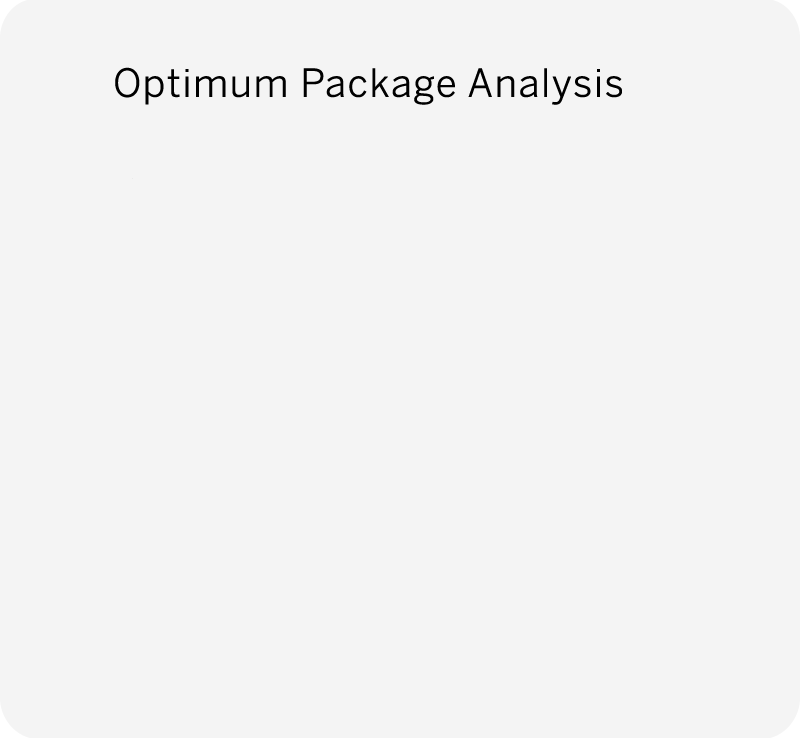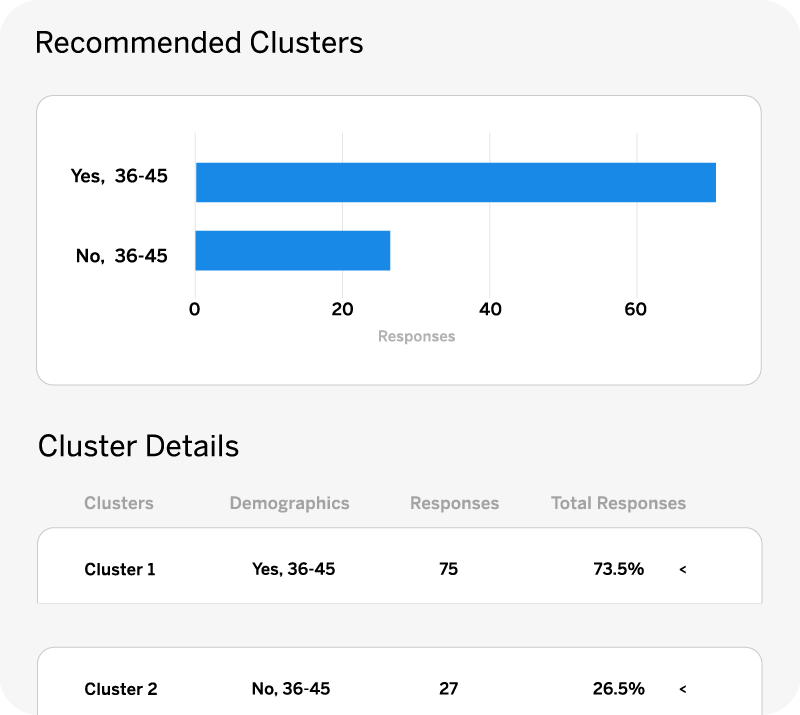What do we mean by product packaging?
Product packaging is the way you present your goods and services to the customer.
To most people, “product packaging” implies boxes, packets, bags, wrappings and similar physical items that protect the inner contents or separate out measured quantities of items – such as foodstuffs or liquids.
However, packaging can also mean grouping together products and services so that they can be bought as a single unit. This might be to better serve the customer and to target a specific audience based on what you know about their needs.
For example, a software company might package up a year’s VPN service with virus protection, knowing that their target audience is concerned with privacy and security. The end result is a product that’s more compelling and more valuable to the customer.
“We’re trying to understand what kind of features and functionality should be grouped together to produce the most relevant and resonating package,” says Craig. “We’re not just offering what people will be interested in, but providing the functionality they need to complete the jobs they need to do.”
The value of knowing your customer
To make the right packaging decisions, it’s crucial to know your target customer well. You need to understand who you are marketing to and what customer needs you will be addressing. Your customer knowledge can make the difference between a brand package that’s greater than the sum of its parts, punching above its weight in terms of appeal and perceived value, and one that simply baffles your customer.
So as well as evaluating the different packaging options available to you, you should also make sure your customer knowledge is as up-to-date and comprehensive as possible in preparation for product packaging research.

What do you need to consider when packaging your product?
The first stage in making a packaging decision is to consider your options. You need to be as open as possible and avoid closing off possible options too early, says Craig.
“At least initially, you’re thinking of the total space available. You’re brainstorming any and all ideas you’re having for what could potentially be included.
“It’s important to be really broad with the attributes and functionality you consider, because you don’t want to disregard or remove something too quickly.”
“From there you’re going to carry out different exercises to arrive at something a little more actionable. And so you’re going through different exercises.”
Don’t get too hung up on a set process
“You should view the packaging design process not as a set protocol to run through every time, but more of an exploratory journey with a method that depends on your objectives, the kind of project you’re working on and the market you’re in,” says Craig.
“Doing product packaging design is about having a set of tools you can work with and applying them according to the situation. There may be pricing exercises you can go through to look at the best price point, and tools like Max Diff and card sorting may also be helpful.”
A key part of that toolkit is conjoint analysis.
“You’re likely to end up doing a conjoint analysis at the final stages of your research. It’s often one of the last steps, after you’ve identified the features and functions that matter most out of your total scope of possibilities.”
Conjoint analysis – the key to finding the right mix of attributes
“Conjoint analysis helps organisations understand the trade-offs involved when choosing what to include within a package,” says Craig.
“It helps them understand what’s really important to have included, what’s not as important, and subsequently things like people’s price sensitivity and the costs involved in production.”
“Other exercises help you to carry into the conjoint analysis only the attributes, features and functionalities that really matter – the things you could potentially go forward with.
“Then within the conjoint analysis exercise you’re testing a more finite set of attributes, interchanging those and understanding what rises to the top and what people are really adamant about in terms of inclusion.”
“Qualtrics tools make it possible to bring conjoint analysis in-house, so that you’re not dependent on an agency or third-party service to make changes or run tests. That’s important, because you want to have the freedom to change your approach and explore new possibilities as they arise.”
What you need to consider
Product packaging design is complex, and the factors involved might depend on the size of your business, the maturity of your market and whether you’re bringing out a brand new product or combining your existing offerings in new ways.
Before you begin, think about:
- The expectations of your target audience
Knowing your prospective customer will be the basis for recruiting your research panel, as the people you survey need to represent your target market. - Your competitor’s approaches
No product exists in a vacuum. What competitors are doing can affect expectations around price points and functionalities. It can also mean your target customer has some assumed knowledge of your product that could help or hinder you depending on your approach. - Your brand
You can use conjoint analysis to understand how much of a difference your brand makes to packaging decisions. It’s possible to test branded and non-branded options to determine this. - Your existing product range
Packaging brand new products means your customer has less familiarity and expectation than they would with existing ones. In some cases, a known quantity within a package (maybe a ‘hero product’) can encourage customers to be more interested in or accepting of the other elements you’re bundling with it. - Your budget
As with any business endeavour, it’s crucial to make the best possible use of your budget and get the maximum bang for your buck. Conjoint analysis can help you weigh up the benefits of possible options to make sure your project is cost-efficient – for example, by stacking up the costs of premium packaging against the value it offers in terms of customer preference and likelihood of purchase.
Take control of your product packaging process
Although there’s a lot to consider with product packaging design, you can now automate important functions and use best-in-class analytics to arrive at the optimal solutions. Businesses are saving time and money by using Qualtrics XM software rather than outsourcing conjoint analysis projects.
“We have developed a do-it-yourself easy to use technology that allows users to conduct this type of research on their own,” explains Craig.
“We’re empowering companies to act for themselves so they don’t have to go to outside consultancies to conduct this kind of research. They’re running studies that help them understand how their products should be packaged and priced. It’s very intuitive and easy to use.”
See Conjoint Analysis in action
Ready to see how it works? Here’s a quick overview of how you can use Qualtrics Conjoint XM Solution analysis to design and launch products your customers will love:
- Conjoint Configurator – An intuitive and self-serve interface for rapid configuration of attributes, features and levels and creation of both Conjoint and Maxdiff studies in a matter of a few clicks.

- Conjoint Simulator – A simulation interface that allows users to predict respondent trade-offs in order to design the most optimal package.

- Conjoint Clustering – With auto-clustering, Qualtrics users can segment populations based on their package preferences – allowing for targeted pricing, planning and marketing.

Ready to get started with a conjoint analysis demo?